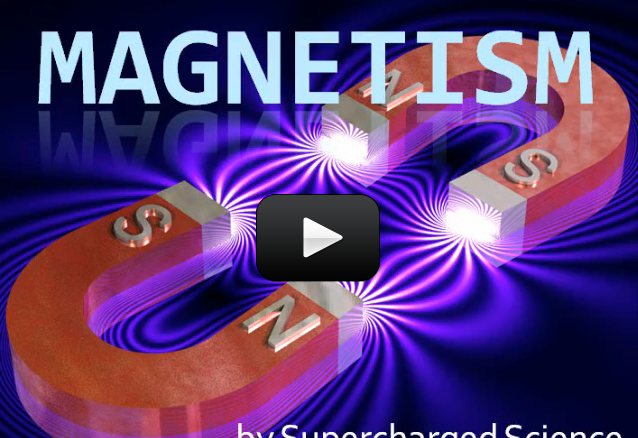This is a recording of a recent live teleclass I did with thousands of kids from all over the world. I’ve included it here so you can participate and learn, too!
Discover how to detect magnetic fields, learn about the Earth’s 8 magnetic poles, and uncover the mysterious link between electricity and magnetism that marks one of the biggest discoveries of all science…ever.
Materials:
- Box of paperclips
- Two magnets (make sure one of them ceramic because we’re going to break it)
- Compass
- Hammer
- Nail
- Sandpaper or nail file
- D cell battery
- Rubber band
- Magnet Wire
Optional Materials if you want to make the Magnetic Rocket Ball Launcher:Four ½” (12mm) neodymium magnets
- Nine ½” (12 mm) ball bearings
- Toilet paper tube or paper towel tube
- Ruler with groove down the middle
- Eight strong rubber bands
- Scissors


Please refer to the Shopping List for this section (Unit 12)
where do i get all those magnets
The cylinders should be a magnets and the spheres should be steel ball bearings (not magnets)
It is best to use a neodymium cylinder magnet. There are a few sources for these, including Amazon.
And would it still work if I just used the sphere ones? Or is the effect better if I used the sphere ones and the cylinder ones?
What type of magnets do you need to make the rocket launcher?
I invite you to watch the teleclass on magnetism. It is available here under Unit 11, Module 1 : https://www.sciencelearningspace2.com/2020/04/special-science-teleclass-magnetism-2/
How do the paper clips magnet to the magnet?
What makes a magnet stick to your refrigerator?
The phenomenon described in the experiment has also been explained as the Cheerios effect and is attributed to behavior due to surface tension (not magnetism). I’m thinking that the attraction of the cereal is a combination of magnetism and surface tension. So, here is my two part answer. I hope this is accurate:
1) Since the north and south poles are on opposite sides of magnets, they are happiest connecting end to end. This provides a very slight force that encourages the pieces to form a straight line, which presses the lineup against the curve of the bowl.
2) The attraction of molecules in liquid causes a membrane on the surface of the liquid. This is part of the phenomenon called surface tension. (That’s how water strider bugs can walk on water) This causes the cereal pieces to make a slight “dip” on the liquid’s surface. Surface tension also causes the liquid to slightly curve up or down along the edge of the bowl. The combination of these two concepts causes the pieces to appear to be attracted to the edge of the bowl.
my mom helps me in since because she used to be a chemist your since is awesome!
We did the cereal magnet experiment. We were wondering why the cereal gravitates to the rims of the palate and not the meddle? C= 1 2 3 4 5 6 7 8 9 10
Awww – so glad you are enjoying the content!
THIS IS SOOOO MUCH COOLER THAN WHAT WE USE TO Do At SCHOOL!!!!!!!